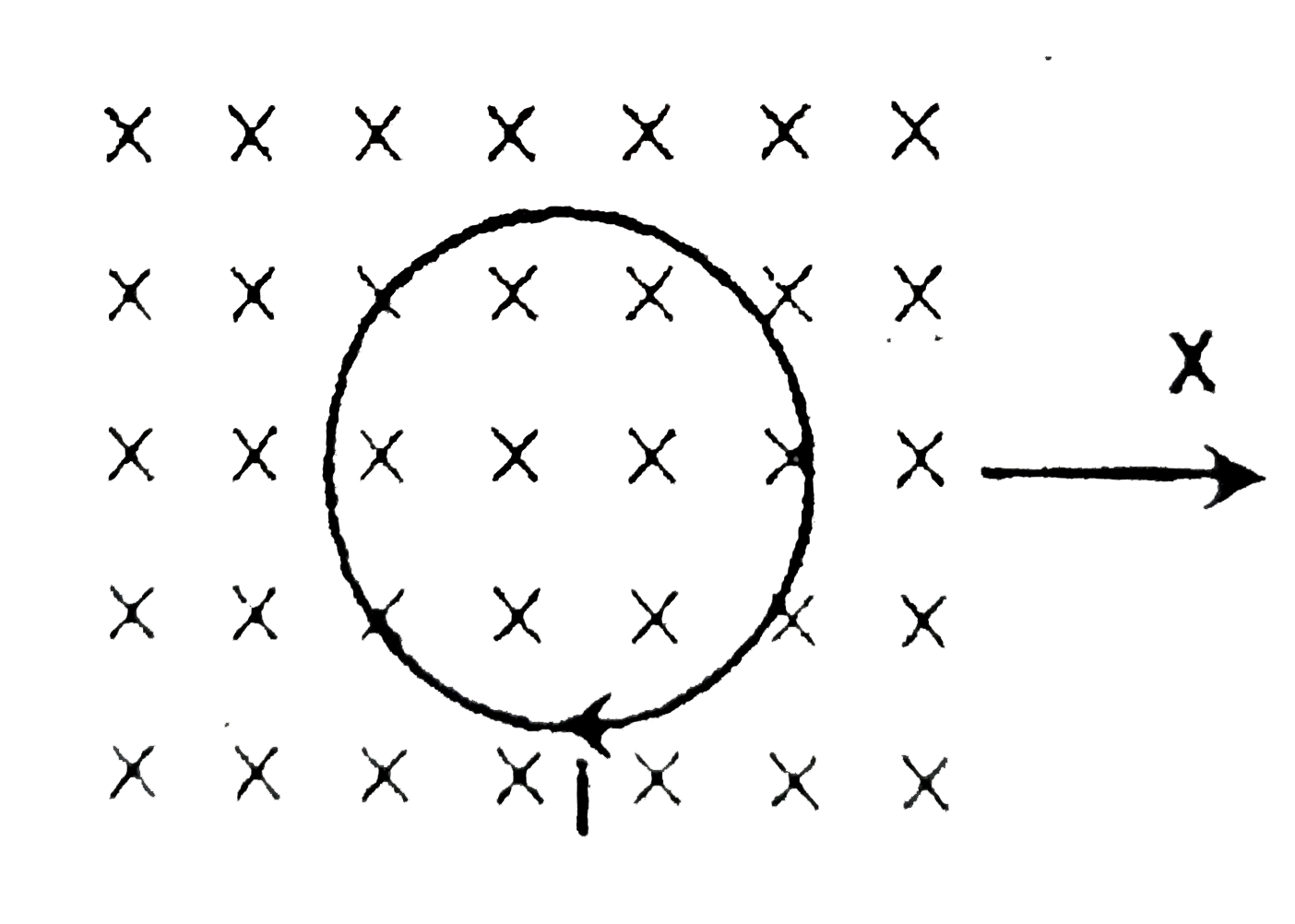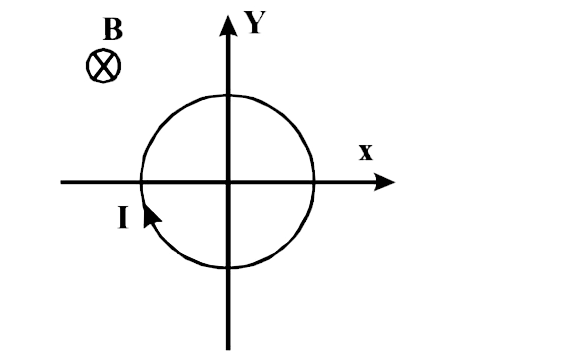A metallic wire is folded to form a square loop a side 'a'. It carries a current 'I' and is kept perpendicular to a uniform magnetic field. If the shape of the loop is changed from square to a circle without changing the length of thw wire and current, the amount of work done in doing so is
iBa2(π+2)
iBa2(π−2)
iBa2(4/π−1)
iBa2(1−4π)
The correct Answer is:D
To solve the problem of finding the work done in changing the shape of a metallic wire from a square loop to a circular loop while keeping the length of the wire and the current constant, we can follow these steps:
1. Determine the Length of the Wire:
The length of the wire when it is folded into a square loop with side length 'a' is given by:
L=4a
2. Relate the Length of the Wire to the Circle:
When the wire is reshaped into a circular loop, the circumference of the circle must equal the length of the wire:
2πr=4a
From this, we can solve for the radius r:
r=4a2π=2aπ
3. Calculate the Area of the Square Loop:
The area As of the square loop is:
As=a2
4. Calculate the Area of the Circular Loop:
The area Ac of the circular loop is:
Ac=πr2=π(2aπ)2=π⋅4a2π2=4a2π
5. Calculate the Initial Potential Energy:
The potential energy Ui of the square loop in a magnetic field B is given by:
Ui=−μ⋅B=−I⋅As⋅B=−I⋅a2⋅B
6. Calculate the Final Potential Energy:
The potential energy Uf of the circular loop is:
Uf=−μ⋅B=−I⋅Ac⋅B=−I⋅4a2π⋅B
7. Calculate the Work Done:
The work done W in changing the shape of the loop is the difference between the final and initial potential energies:
W=Uf−Ui
Substituting the values we found:
W=(−I⋅4a2π⋅B)−(−I⋅a2⋅B)
Simplifying this:
W=−I⋅4a2π⋅B+I⋅a2⋅B=I⋅a2⋅B(1−4π)
Final Answer:
Thus, the amount of work done in changing the shape of the loop from a square to a circle is:
W=I⋅a2⋅B(1−4π)
The length of the wire when it is folded into a square loop with side length 'a' is given by:
L=4a
When the wire is reshaped into a circular loop, the circumference of the circle must equal the length of the wire:
2πr=4a
From this, we can solve for the radius r:
r=4a2π=2aπ
The area As of the square loop is:
As=a2
The area Ac of the circular loop is:
Ac=πr2=π(2aπ)2=π⋅4a2π2=4a2π
The potential energy Ui of the square loop in a magnetic field B is given by:
Ui=−μ⋅B=−I⋅As⋅B=−I⋅a2⋅B
The potential energy Uf of the circular loop is:
Uf=−μ⋅B=−I⋅Ac⋅B=−I⋅4a2π⋅B
The work done W in changing the shape of the loop is the difference between the final and initial potential energies:
W=Uf−Ui
Substituting the values we found:
W=(−I⋅4a2π⋅B)−(−I⋅a2⋅B)
Simplifying this:
W=−I⋅4a2π⋅B+I⋅a2⋅B=I⋅a2⋅B(1−4π)
Thus, the amount of work done in changing the shape of the loop from a square to a circle is:
W=I⋅a2⋅B(1−4π)
Topper's Solved these Questions
- MAGNETIC EFFECT OF CURRENT AND MAGNETISMBOOK - DC PANDEY ENGLISHCHAPTER - MAGNETIC EFFECT OF CURRENT AND MAGNETISMEXERCISE - Only One Option is Correct
45 Videos
- MAGNETIC EFFECT OF CURRENT AND MAGNETISMBOOK - DC PANDEY ENGLISHCHAPTER - MAGNETIC EFFECT OF CURRENT AND MAGNETISMEXERCISE - More than One Option is Correct
25 Videos
- LAWS OF THERMODYNAMICSBOOK - DC PANDEY ENGLISHCHAPTER - LAWS OF THERMODYNAMICSEXERCISE - Level 2 Subjective
18 Videos
- MEASUREMENT AND ERRORSBOOK - DC PANDEY ENGLISHCHAPTER - MEASUREMENT AND ERRORSEXERCISE - Subjective
19 Videos
Similar Questions
A square loop of side a carris a current I. The magnetic field at the centre of the loop is
View SolutionA circular flexible loop of wire of radius r carrying a current I is placed in a uniform magnetic field B . If B is doubled, then tension in the loop
View SolutionA non planar closed loop of arbitrary shape carryign a current I is placed in uniform magnetic field. The force acting on the loop
View SolutionA wire carrying a current i is first bent in the form of a square of side a and placed at right angle to a uniform magnetic field of induction B. The work done in changing its shape' into a circle is
View SolutionA rectangular loop of metallic wire is of length a and breadth b and carries a current i. The magnetic field at the centre of the loop is
View SolutionA square loop of side 6cm carries a current of 30A. Calculate the magnitude of magnetic field B at a point P lying on the axis of the loop and a distance√7 cm from centre of the loop.
View SolutionA thin circular wire carrying a current I has a magnetic moment M. The shape of the wire is changed to a square and it carries the same current. It will have a magnetic moment
View SolutionA circular loop of wire is carring a current i (as shown in the figure). On applying a uniform magnetic field inward perpendicular to the plane of the loop, the loop

View SolutionA conducting loop carrying a current I is placed in a uniform magnetic field ponting into the plane of the paper as shown. The loop will have a tendency to

View SolutionA square conducting loop of side length L carries a current I.The magnetic field at the centre of the loop is
View Solution